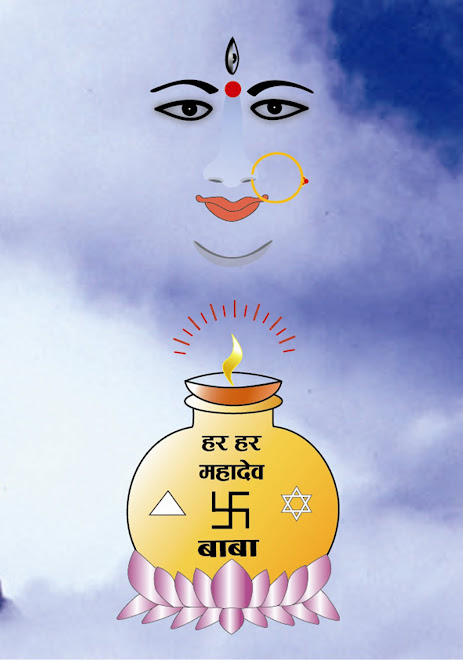
The Aghora Tradition
Followers of the aghora tradition in the city of Banaras believe that this tradition was started by the god Shiva himself, and was propounded further by jagadguru Dattatreya (a historical figure who may have lived about 4000 years ago by some estimates, also mentioned in the epic Ramayana as the son of Rishi Atri and his wife Anusuya, Baba kaluram (during king Harishchandra’s time in ancient India), and by baba Kinaram since the 17th century. Chaturvedi, in fact, mentions several well known personalities from Hindu scriptures as having been a part of the Aghora tradition. These include, until the 10th century C.E., vishwamitra (said to be the mantra seer in the Kaushika Sutra of the Atharva Veda), Vamadeva, (a propounder of the left handed path of tantra and an important personality in the epic Ramayana), vashishtha (the guru of the Raghu lineage in the Ramayana), vashishtha (the guru of the Raghu lineage in the Ramayana, and regarded to be a worshipper of goddess Tara), Queen churala (wife of king shividhwaj mentioned in the Yogavashishtha), emperor vikramaditya (a popular king whose stories are still widely read in the Sanskrit text vetala panchavinshati), Aghoracharya (mentioned as having lived 1300 years ago, a personality popular with the Buddhist lamas in Tibet), Bhairavacharya (said to be the guru of king pushpabhuti, mentioned in Banabhatta’s Harsharita), and Abhinavagupta (the chief propounder of the Kashmir group of agamas said to have lived around the 10th century C.E. ).8 Chaturvedi also mentions sarvanand Thakur (born about 600 years ago in Mehar village of Tripura), Avadhut nagalingappa (born in the Nizam kingdom in 1860), and Aghoracharya of tarapeeth, Bamakhepa.
Followers of the aghora tradition in the city of Banaras believe that this tradition was started by the god Shiva himself, and was propounded further by jagadguru Dattatreya (a historical figure who may have lived about 4000 years ago by some estimates, also mentioned in the epic Ramayana as the son of Rishi Atri and his wife Anusuya, Baba kaluram (during king Harishchandra’s time in ancient India), and by baba Kinaram since the 17th century. Chaturvedi, in fact, mentions several well known personalities from Hindu scriptures as having been a part of the Aghora tradition. These include, until the 10th century C.E., vishwamitra (said to be the mantra seer in the Kaushika Sutra of the Atharva Veda), Vamadeva, (a propounder of the left handed path of tantra and an important personality in the epic Ramayana), vashishtha (the guru of the Raghu lineage in the Ramayana), vashishtha (the guru of the Raghu lineage in the Ramayana, and regarded to be a worshipper of goddess Tara), Queen churala (wife of king shividhwaj mentioned in the Yogavashishtha), emperor vikramaditya (a popular king whose stories are still widely read in the Sanskrit text vetala panchavinshati), Aghoracharya (mentioned as having lived 1300 years ago, a personality popular with the Buddhist lamas in Tibet), Bhairavacharya (said to be the guru of king pushpabhuti, mentioned in Banabhatta’s Harsharita), and Abhinavagupta (the chief propounder of the Kashmir group of agamas said to have lived around the 10th century C.E. ).8 Chaturvedi also mentions sarvanand Thakur (born about 600 years ago in Mehar village of Tripura), Avadhut nagalingappa (born in the Nizam kingdom in 1860), and Aghoracharya of tarapeeth, Bamakhepa.
+copy.jpg)
No comments:
Post a Comment